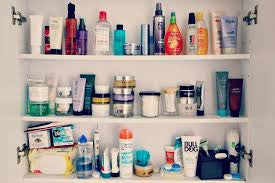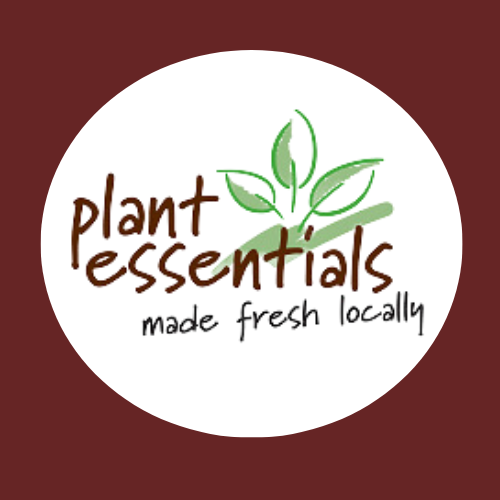
What's in your skincare?
Have you ever read the labels on your skin care products and wondered what some of those ingredients listed actually are? Do they come from plants? Have they been manufactured in a laboratory? Are they potentially beneficial to my skin and wellbeing or are they potentially harmful? More and more information on the topic of skin care ingredients is becoming available. Here we take a look at and discuss some of the ingredients most commonly found in everyday skin care products.
WHAT’S IN YOUR SKIN CARE. THE GOOD, THE BAD AND THE UGLY
Have you ever read the labels on your skin care products and wondered what some of those ingredients listed actually are? Do they come from plants? Have they been manufactured in a laboratory? Are they potentially beneficial to my skin and well-being or are they potentially harmful? More and more information on the topic of skin care ingredients is becoming available and here we take a look at and discuss some of the ingredients most commonly found in everyday skin care products, some good, some bad, some ugly.
Parabens
An estrogen mimic, parabens are preservatives with antibacterial properties. Widely used in all kinds of personal care products, paraben is usually preceded by the prefixes methyl-, ethyl-, butyl-, or propyl-. Parabens can cause allergic reactions or contact dermatitis in some people. Preservatives are one of the leading causes of contact dermatitis. There are safer practical alternatives to parabens, including vitamin E, vitamin C and grapefruit seed extract.
Propylene Glycol
Propylene glycol is used as a humectant in skincare products. It works by absorbing,
holding and retaining moisture. Used in cosmetic formulations to increase the skin’s moisture content and to prevent products from drying out. All humectants, when used in excessive amounts and in environments where the humidity is low, can draw moisture from the skin contributing to dehydration of the skin. It is recognized as a neurotoxin by the National Institute for Occupational Health and Safety in the U.S. It is known to cause contact dermatitis, kidney damage and liver abnormalities. It is widely used as a moisture-carrying ingredient in place of glycerine because it is cheaper and more readily absorbed through the skin. The Material Safety Data Sheet for propylene glycol warns workers handling this chemical to avoid skin contact. A better alternative is Glycerin/glycerol (vegetable or animal), sorbitol, vitamin B5 (panthenol), or collagen.
Sodium Lauryl Sulfate, Sodium Laureth Sulfate
This chemical is a known skin irritant and enhances allergic response to other toxins and allergens. The U.S. government has warned manufacturers of unacceptable levels of dioxin formation in some products containing this ingredient. The chemical can react with other ingredients to form cancer-causing nitrosamines. Sodium lauryl sulfate is used as a lathering agent in commercial shampoos, as well as skin creams and some brands of toothpaste. It is present in ninety per cent of toothpastes. Sodium laureth sulfate may be contaminated with 1,4-dioxane, a carcinogen. Dioxane readily penetrates the skin. While dioxane can be removed from products easily and economically by vacuum stripping during the manufacturing process, there is no way to determine which products have undergone this process. Labels are not required to list this information. Irritation by surfactants accounts for a large number of adverse skin and scalp reactions. The level of irritation depends on the type of surfactant used, its concentration, and duration of the contact with the skin. Exaggerated use of surfactants coupled with pre-existing sensitivity; extremes of temperature or pH; low humidity; or co-use of other potential irritants such as abrasives, bleaches, or lipid solvents canbring about reactions such as skin irritation, inflammation, chapping, and roughness.
Poor manufacturing practices may contaminate surfactants or preparations containing surfactants with nitrosamines, which are known carcinogens. A better chose would be plants containing saponins such as soapwort root, yucca, quillaya bark. Modified plant surfactants include lauryl polyglucose, naturally derived ammonium laureth/lauryl sulphate (although can also be petrochemically derived), naturally derived sodium laureth/lauryl sulphate (can also be petrochemically derived).
Dioxins
You won't find dioxin listed on any label. It's formed as an accidental by-product of some manufacturing processes using chlorine, especially paper bleaching and the creation of plastic. Dioxin is one of the most powerful carcinogens known and accumulates in body fat. Mainstream deodorants and anti-bacterial soaps are suspect. Chlorine bleached tissues, toilet paper and cotton balls can contain dioxin. Plastic bottles may leach dioxin into creams, shampoos and other products we use daily.
Lead
Lead is a known carcinogen and hormone disruptor. It is readily absorbed through the skin, and accumulates in the bones. It causes neurological damage and behaviour abnormalities, and large accumulations can result in leg cramps, muscle weakness, numbness and depression. Lead is found in some hair dyes.
Nonylphenols
This estrogen-mimicking chemical is a surfactant used for its detergent properties. It can be found in some plastics, as well as shaving creams, shampoos and hair colours. It can be created when certain chemicals commonly found in personal care products break down. Nonylphenols can be a component in polyvinyl chloride (PVC), a compound often found in acrylic nails. They are persistent in the environment and of such concern that many European countries are phasing them out. Some manufacturers have voluntarily discontinued their use.
Colours
Synthetic colours are of no benefit to the skin. Since the creation of FDA regulations on colours, the types of colours certified as safe and appropriate for use in food, drugs, and cosmetics has gone from 116 permitted in 1959 to 35 permitted in 1988 due to allergies and carcinogenicity. Synthetic and potentially harmful colours could include most FD&C (Food, Drug and Cosmetic) colours and D&C (Drug and Cosmetic) colours, which are made from coal tar. Yuck. Safe alternatives are ingredients such as Beta-carotene, chlorophyll, clays, spices and other plant derived colours.
Emulsifiers
In a homogenized system, holds the oil-based and water-based ingredients together, thereby avoiding their separation in the cosmetic formulation. Synthetic examples include Triethanolamine, dimethicone copolyol methyl ether, cetyl alcohol (plant or petrochemically derived). The problem with these are that these can cause possible sensitivity or allergic reactions. Natural alternatives include Lecithin, beeswax, glyceryl monostearate, cetyl alcohol, stearic acid.
Surfactants
Surface active agents lower surface tension between two or more incompatible phases. Foaming and cleansing agents are surfactants. There are almost 2000 different surfactants available to the cosmetic formulator.
As you can see it’s quite a mine field out there. Next time you go shopping, take the time and read the ingredients, it’s quite unnerving to see what we take for granted as safe – simply because the packaging looks so friendly. Why don’t you see for yourself just how hard it can be to find a household cleaner or body products free of these nasties.
- Choosing a selection results in a full page refresh.
